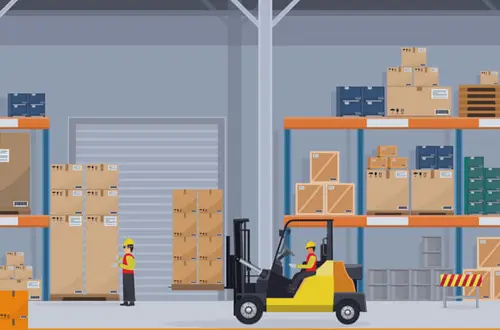Amazon Warehousing Configuration Fee and Low-volume Inventory Fee Guide
Behind the increase in Amazon's warehousing fees, cross-border e-commerce sellers need to pay more to store and manage their products due to the increase in warehousing fees. This will lead to an increase in overall operating costs, thereby affecting product pricing. and profit margins.
Faced with Amazon's warehouse utilization surcharge and overage inventory surcharge policies, sellers need to manage their inventory more carefully. If your inventory is unsaleable or poorly managed, you may face additional charges. This can be a challenge for smaller or inexperienced sellers.
As fees increase and policies adjust, sellers need to manage their operations more granularly. This includes inventory management, order processing, logistics and distribution, etc. For those sellers who lack experience and resources, this may increase the complexity and difficulty of operations.
Detailed information about inbound configuration service fees and low-volume inventory fees
What is the warehousing configuration service fee?
The warehousing allocation service fee is the cost incurred by Amazon to help sellers allocate inventory to fulfillment centers closer to consumers. Sellers can choose different warehousing methods based on different warehousing configuration options to optimize inventory allocation, provide faster delivery, and reduce Fulfillment by Amazon (FBA) delivery fees.

Starting from March 1, 2024, Amazon has introduced warehousing configuration service fees, which will charge different levels of fees for different warehousing configuration options selected by sellers, provide faster delivery speeds, and reduce Amazon Fulfillment (FBA) delivery fees.
Amazon will charge the seller a warehousing configuration service fee 45 days after receiving the shipment, based on the actual warehousing location and quantity received.
The specific fees depend on the warehousing configuration options selected by the seller, including single-point warehousing and distributed warehousing. For example, single point warehousing may vary depending on the distance of the warehousing location.
The difference between single-point entry and dispersed entry
Single Point Warehousing - The original premium service: Sellers can send inventory to a minimum number of warehousing locations, and Amazon will allocate the inventory on the seller's behalf across the Amazon fulfillment network. Sellers are required to pay a fee, which may vary depending on the distance to the storage location.
Dispersed warehousing - the original discount service: sellers can ship their inventory to multiple warehousing locations at low or even free cost. Discounts also depend on factors such as shipment quantity and warehousing location.
What is the low volume inventory fee?
Starting April 1, 2024, Amazon will charge a low-volume inventory fee for standard-size items whose inventory levels consistently fall below customer demand.
If your inventory levels are consistently too low relative to your product sales, it may prevent Amazon from distributing your products to its fulfillment network and increase fulfillment costs.
How can I avoid low-volume inventory fees?
If you meet the following conditions, the low-volume inventory fee will be waived:
- For new professional sales accounts, the fee will be waived within 365 days after the first batch of inventory is received;
- For new parent ASINs, this fee will be waived within 180 days after the first batch of inventory is received. Sellers need to join the Amazon Logistics New Product Warehousing Discount Program to enjoy this benefit;
- This fee is waived for products that use Amazon’s automatic replenishment.
- Sellers can also maintain inventory for more than four weeks based on product sales to avoid paying low-volume inventory fees.
Facing these difficulties requires sellers to adopt more sophisticated and effective management strategies to deal with them. Have you already formulated corresponding measures to solve this problem?
What are some effective ways to reduce warehousing costs?
Use Amazon Calculator
Using the free Amazon Logistics Revenue Calculator, you can understand the estimated cost of your products in advance, choose the appropriate delivery channel, and add an evaluation of the warehouse configuration service fee, allowing you to quickly compare the costs of different delivery options, calculate total revenue, and Estimated cost per item sold.
Use AWD to close positions for free
"Amazon Warehousing Distribution Network AWD" automatically replenishes goods for FBA, which not only eliminates warehousing configuration service fees and low-volume inventory fees, but also achieves warehouse closing effects and saves first-leg costs. AWD advantages ensure worry-free replenishment, cost savings, convenient operation and sellable inventory.
Use third-party logistics warehousing service providers
Third-party logistics warehousing service providers usually have more flexible fee structures that can be customized based on your actual needs and inventory levels. It can also help you optimize inventory management, track inventory in real time, predict demand and avoid low inventory, ensuring that inventory levels are suitable for your sales needs. You can choose to pay on-demand according to your own needs to avoid fixed warehousing configuration service fees and low-volume inventory fees.
Many third-party logistics warehousing service providers have global networks and coverage that can help sellers expand their business to international markets and provide cross-border logistics services.
Choosing the right third-party logistics warehousing service provider can help you get your goods to consumers faster. You can choose a warehouse close to your target market to reduce shipping time.
In addition to warehousing services, some third-party logistics warehousing service providers also provide value-added services, such as order processing, packaging, distribution and returns processing. These additional services can help sellers improve operational efficiency and enhance customer experience.
For sellers, facing the challenges brought by the increase in Amazon’s warehousing fees, working with a professional third-party logistics service provider (3PL) may be a wise choice. If you are looking for a professional third-party logistics service provider to help solve the problem of increasing Amazon warehousing fees, I recommend that you consider contacting Stone3PL.
Stone3PL is a professional logistics service provider dedicated to providing customers with comprehensive warehousing and logistics solutions. Stone3PL has a more flexible fee structure that can be customized based on your actual needs and inventory levels. They have advanced warehousing facilities, efficient logistics technology and experienced teams to meet your various warehousing and logistics needs.
